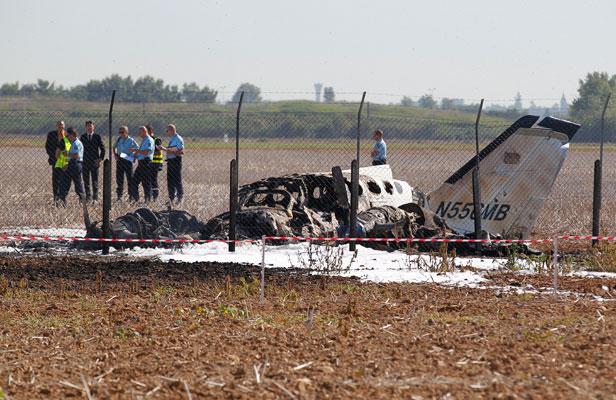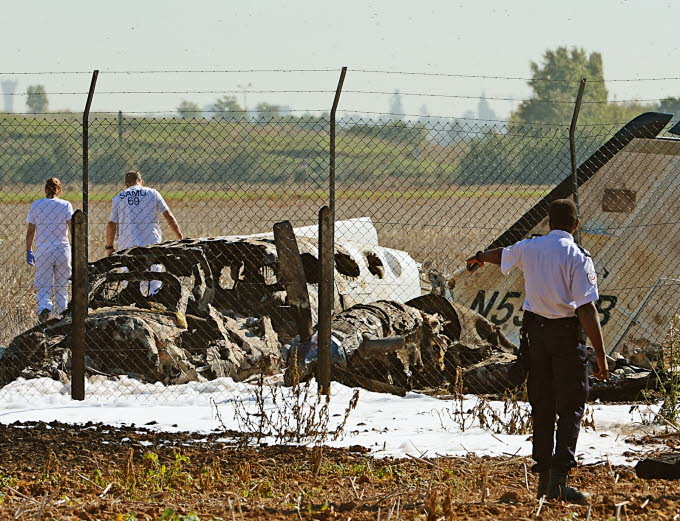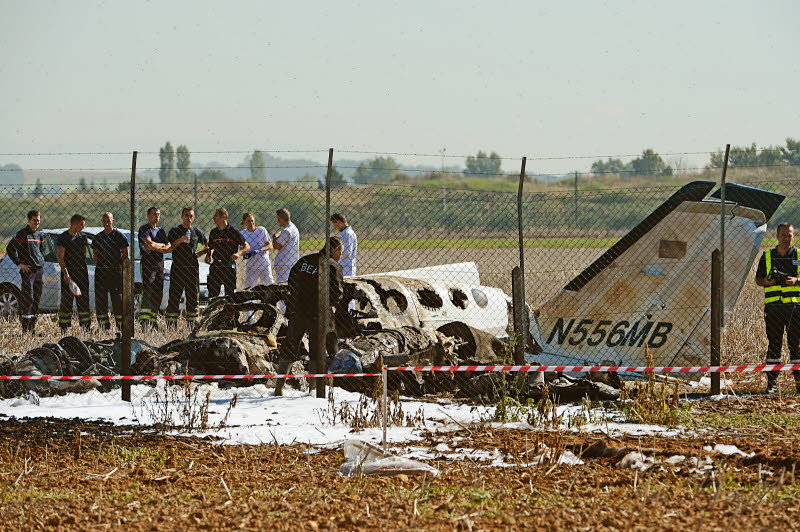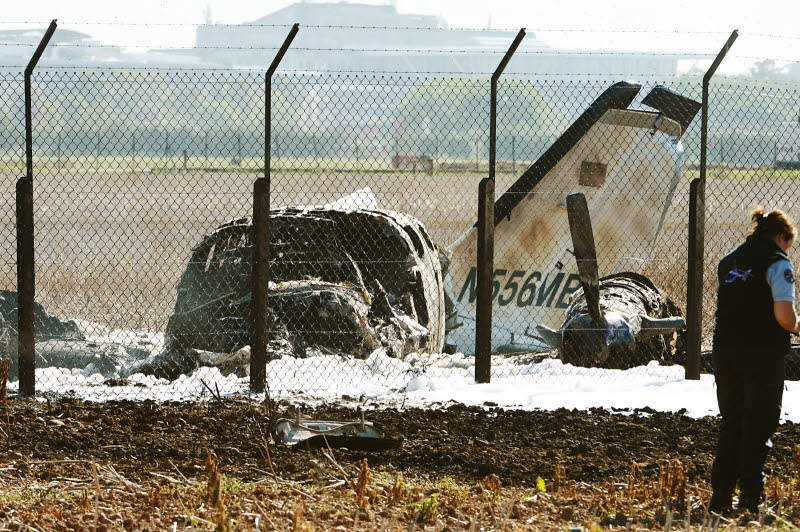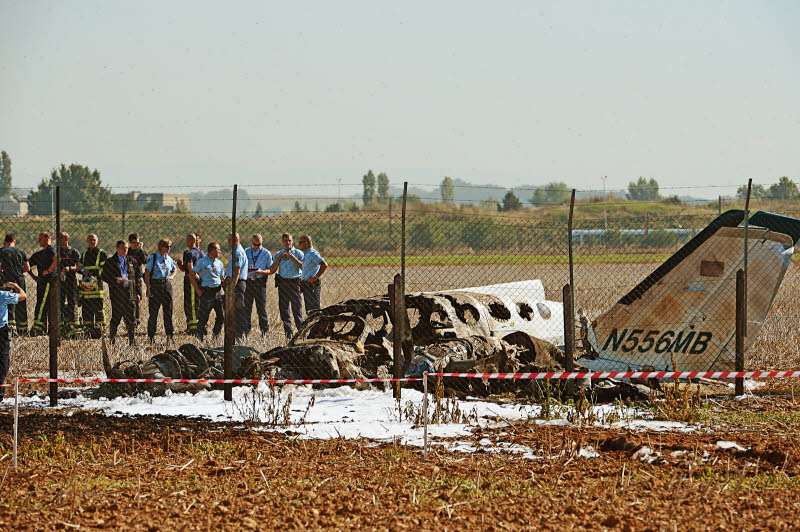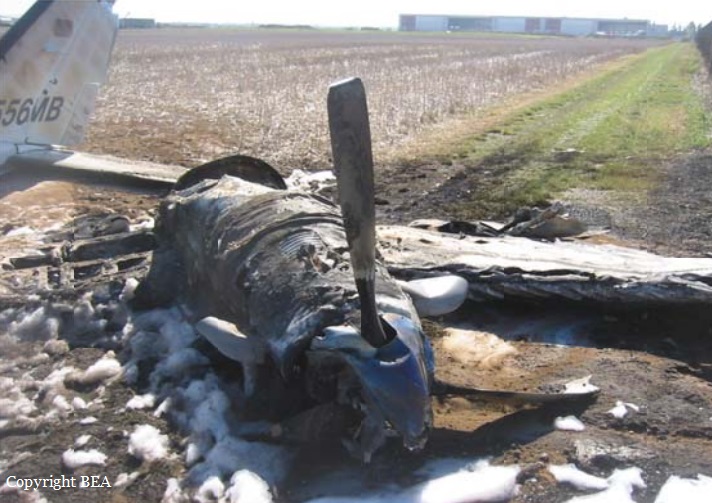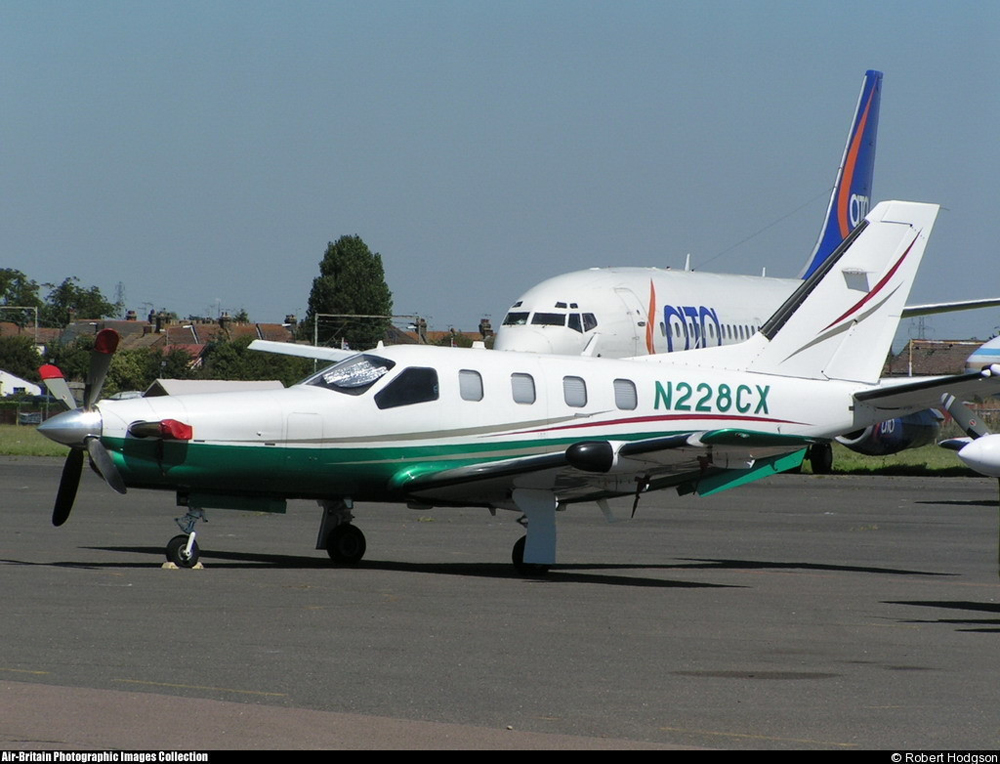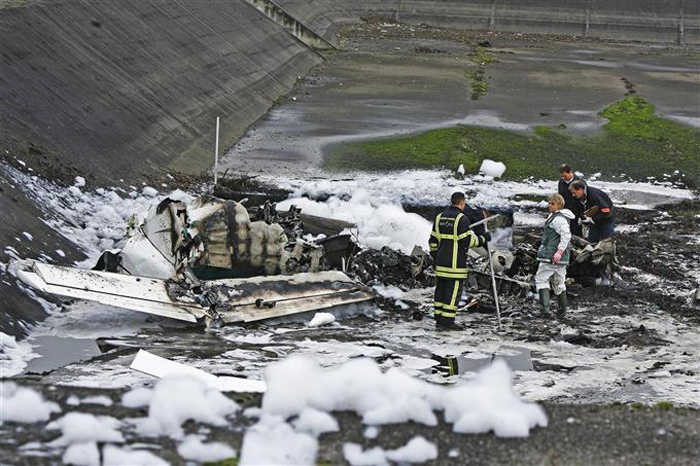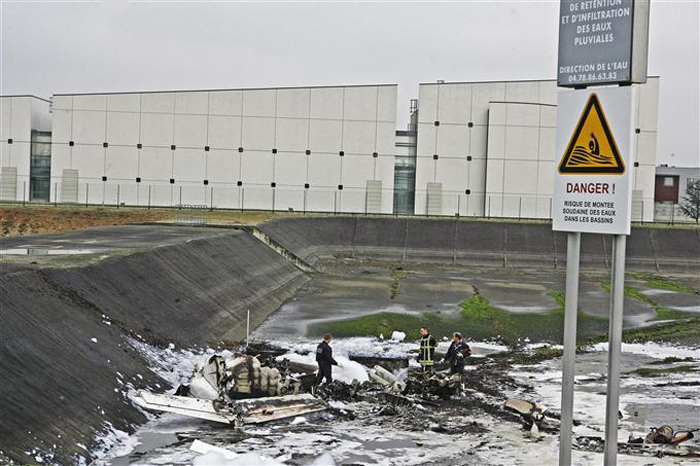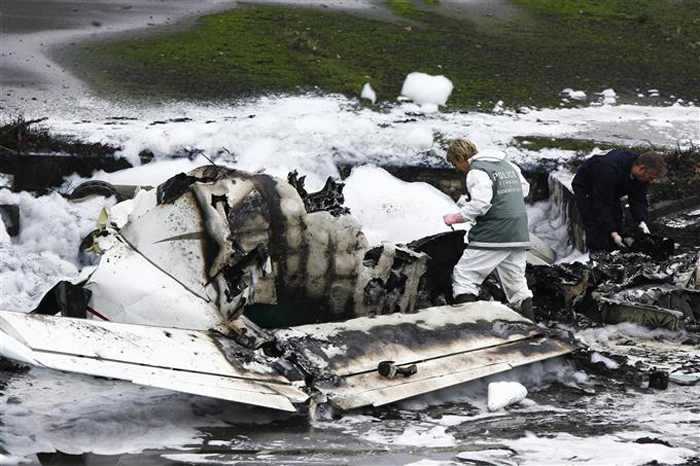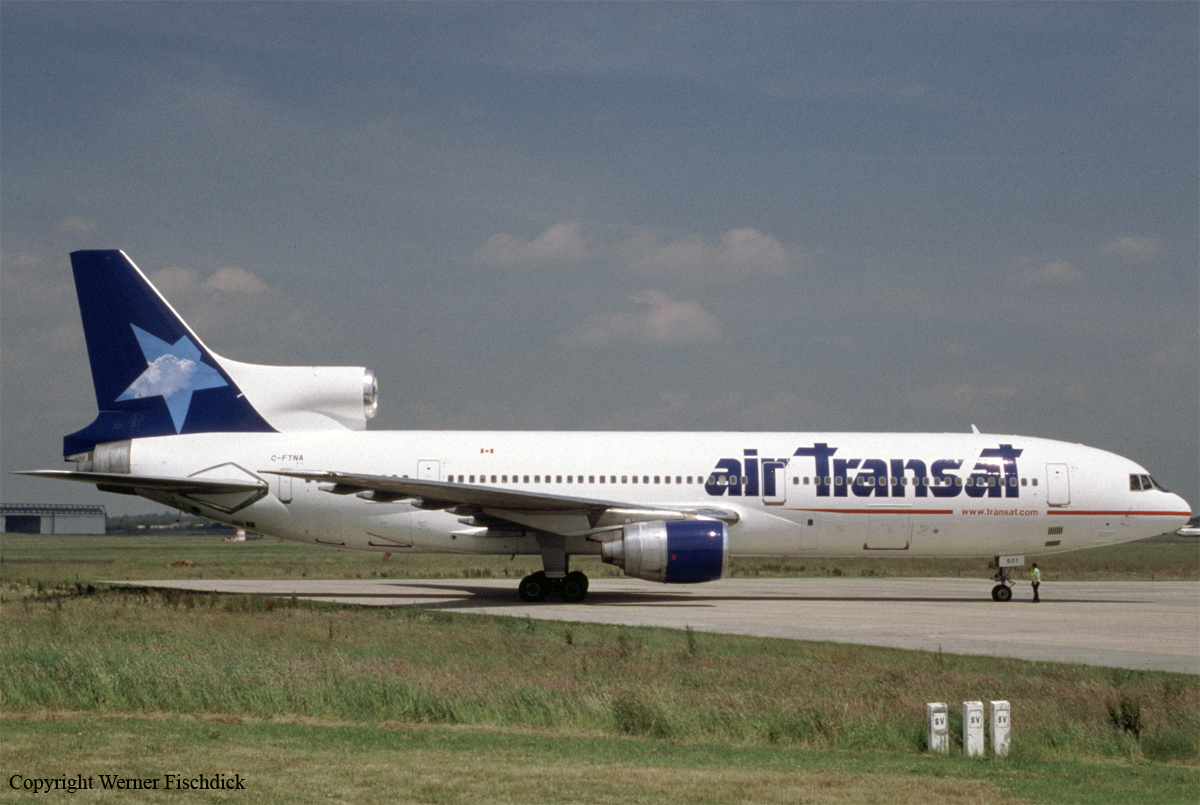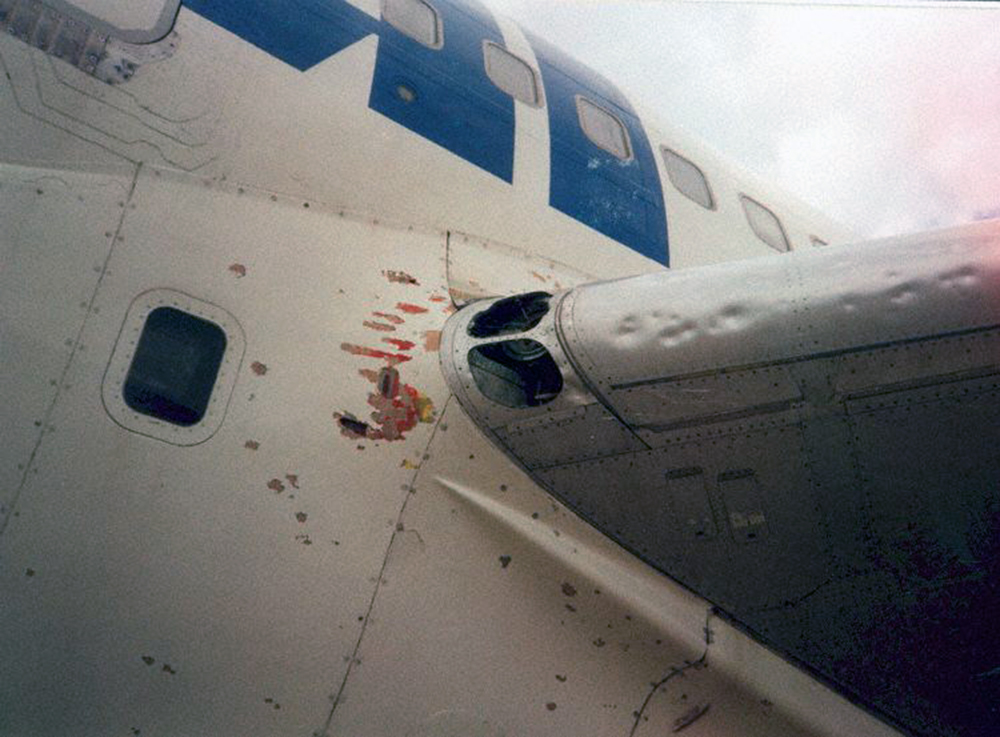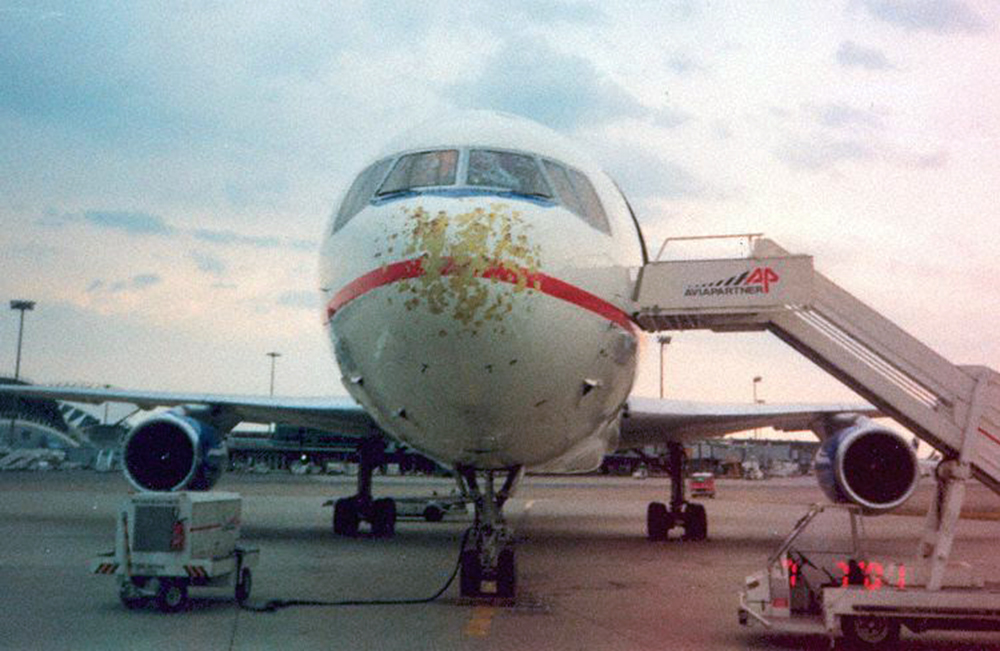Crash of a Cessna 421C Golden Eagle III in Lyon-Bron: 4 killed
Date & Time:
Sep 24, 2013 at 1045 LT
Registration:
N556MB
Survivors:
No
Schedule:
Lyon - Aix-les-Milles
MSN:
421C-00468
YOM:
1978
Crew on board:
1
Crew fatalities:
Pax on board:
3
Pax fatalities:
Other fatalities:
Total fatalities:
4
Captain / Total hours on type:
12.00
Copilot / Total hours on type:
3
Aircraft flight hours:
3661
Circumstances:
After takeoff from runway 34 at Lyon-Bron Airport, while in initial climb at a height of 200 feet, the twin engine airplane deviated to the left, rolled to the left and then veered to the left with a low rate of climb. Shortly after passing the end of the runway, the airplane lost height then struck the ground and caught fire. The airplane was destroyed by a post crash fire and all four occupants were killed. For unknown reasons, the pilot-in-command was seating in the right seat.
Probable cause:
The accident probably occurred as a result of an asymmetrical flight starting from the rotation that the pilot was not able to control. As technical examinations and observations from the wreckage could not give any conclusive malfunction of the engines or systems, the initial cause is most likely an improper adjustment of the steering trim before takeoff. The poor experience of the pilot on this high powered and complex aircraft as well as the low height reached did not allow the pilot to understand and manage the situation quickly and avoid the loss of control.
Final Report:

